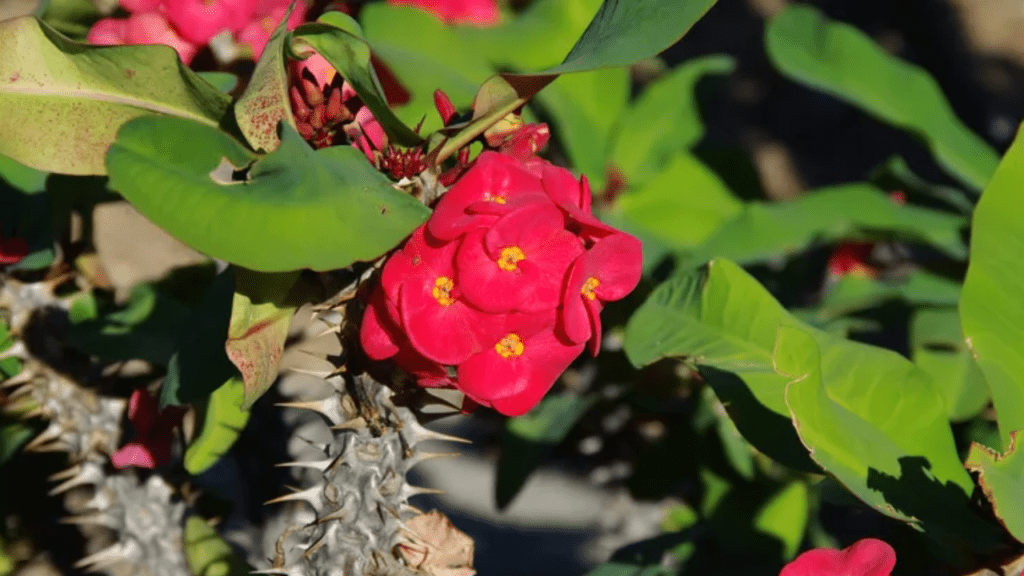
Discover the Most Beautiful Flowers with Thorns for Your Garden
Flowers with thorns can add a unique and striking element to any garden. In this post, we will explore a variety of stunning flowers with thorns that can add beauty and character to your garden. We will provide information on the different types of thorny flowers and offer tips on how to care for them in your garden. Whether you’re a seasoned gardener or just starting out, this post will help you discover some of the most beautiful and intriguing thorny flowers to incorporate into your garden.
Thorny flowers not only add beauty to a garden, but they also provide protection from unwanted animals and pests. Some popular thorny flowers that can add a unique and striking element to any garden include roses, hollyhocks, bougainvillea, and hawthorn. These flowers can add character and depth to your garden, creating a visually stunning and dynamic landscape. Additionally, their thorns can act as a natural deterrent to keep unwanted animals and pests at bay. With proper care and maintenance, these thorny flowers can thrive in your garden and bring a sense of elegance and protection to your outdoor space. Whether you’re a seasoned gardener or just starting out, incorporating thorny flowers into your garden can elevate its beauty and provide a layer of defense against unwanted intruders.
Table of Contents
ToggleThe Appeal of Flowers with Thorns
Visual Beauty
Thorny flowers can add a unique and striking element to any garden, creating a visually stunning and dynamic landscape. Whether you’re a seasoned gardener or just starting out, incorporating thorny flowers into your garden can elevate its beauty and provide a layer of defense against unwanted intruders. Some popular thorny flowers like roses, hollyhocks, bougainvillea, and hawthorn can add character and depth to your garden. Not only do they add visual beauty, but their thorns also provide protection from unwanted animals and pests. With proper care and maintenance, these thorny flowers can thrive in your garden, adding an elegant and protective element to your outdoor space.
Natural Defense Mechanism
Thorny flowers serve as a natural defense mechanism for your garden. These flowers not only add visual beauty and elegance to your outdoor space but also provide a layer of protection against unwanted intruders. With proper care and maintenance, thorny flowers like roses, hollyhocks, bougainvillea, and hawthorn can thrive in your garden and create a visually stunning and dynamic landscape. Whether you are an experienced gardener or just starting out, incorporating thorny flowers can elevate the beauty of your garden and offer protection from unwanted animals and pests. So, consider adding these beautiful and protective flowers to your garden to enhance its appeal and safeguard your outdoor space.
Symbolism and Cultural Significance
Thorny flowers hold a significant symbolism and cultural significance in many societies. For example, the rose is often associated with love and romance, while hollyhocks are symbolic of ambition and fertility. In some cultures, thorny flowers are used in religious ceremonies or rituals to symbolize strength, protection, or resilience. Additionally, the presence of thorny flowers in art and literature can carry deep cultural and historical meanings. By incorporating thorny flowers into your garden, you not only add visual beauty but also connect with the rich symbolism and cultural significance that these flowers carry. Whether it’s for protection, symbolism, or cultural significance, thorny flowers can add a meaningful and elegant element to your outdoor space.
Top 10 Flowers with Thorns
Roses
Roses are one of the most iconic and popular flowers with thorns. With their beautiful blooms and sharp thorns, they symbolize love, passion, and romance. There are many varieties of roses, each with its own unique beauty and fragrance. From classic red roses to delicate pink or white roses, there is a rose for every garden. They require some maintenance, but their beauty and symbolism make them a worthwhile addition to any garden. Whether you choose climbing roses, shrub roses, or hybrid tea roses, you can enjoy the elegance and charm of these thorny flowers in your outdoor space. So, consider adding these beautiful and protective flowers to your garden to enhance its appeal and safeguard your outdoor space.
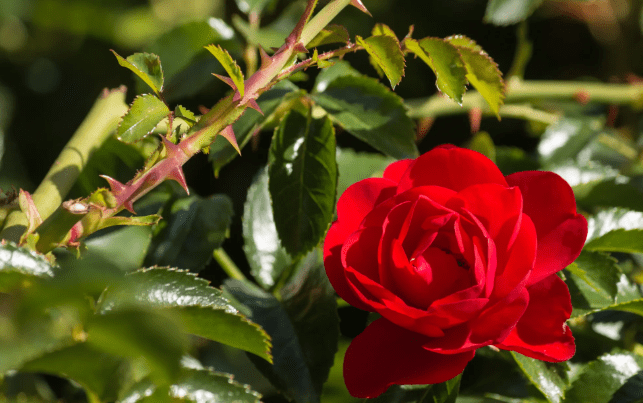
Bougainvillea
Is another popular flower with thorns that adds a vibrant splash of color to any garden. Known for its bright and eye-catching bracts, bougainvillea is a tropical plant that thrives in warm climates. It has sharp thorns that act as a natural deterrent for pests and intruders, making it a great option for adding both beauty and security to your garden. Bougainvillea comes in a variety of colors, including vibrant shades of pink, red, purple, and orange, making it a stunning addition to any outdoor space. While the thorns may make it a bit challenging to prune and care for, the striking beauty and low maintenance of bougainvillea make it a popular choice for many gardeners. Whether you’re looking to add a pop of color to your garden or create a natural barrier, bougainvillea is a thorny flower that is sure to make a statement in your outdoor space. So, consider adding this stunning and protective flower to your garden to enhance its beauty and security.
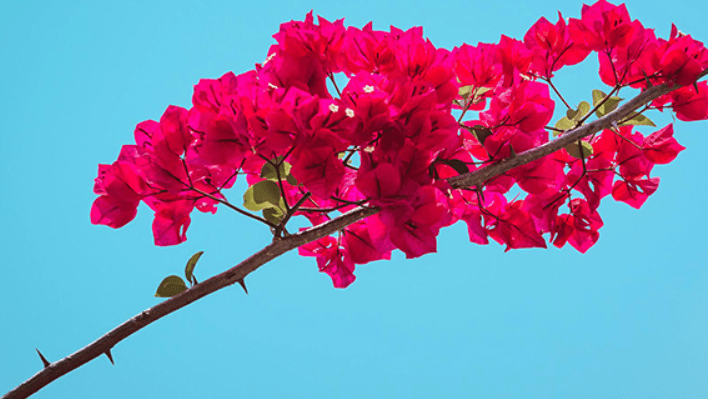
Holly
Is a popular evergreen shrub known for its glossy, spiky leaves and bright red berries. It is a popular choice for holiday decorations and is often used in wreaths and garlands during the Christmas season. The sharp thorns on the leaves act as a natural deterrent for animals and intruders, making it a great option for adding security to your garden. Holly is also a low-maintenance plant that thrives in various climates, making it a versatile option for gardeners. In addition to its security benefits, holly adds a touch of vibrant color to any garden with its iconic red berries and deep green foliage. It is a beautiful and resilient plant that can withstand harsh weather conditions and adds year-round interest to your outdoor space. Whether you’re looking to add a pop of color or enhance the security of your garden, holly is a thorny plant that offers both beauty and protection. Consider adding this timeless and versatile shrub to your garden for a stunning and secure outdoor space.
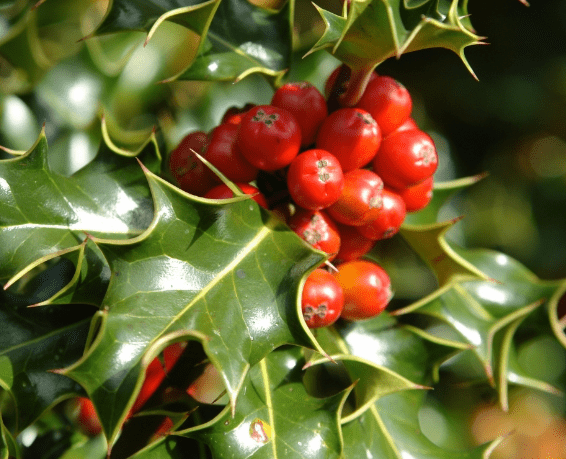
Barberry
Is a type of shrub that is commonly used for holiday decorations, especially during the Christmas season. It is often used in wreaths and garlands, adding a festive touch to any home. The sharp thorns on the leaves of the barberry plant act as a natural deterrent for animals and intruders, making it a great option for adding security to your garden. This makes it a popular choice for those looking to enhance the safety of their outdoor space.
In addition to its security benefits, barberry is also a low-maintenance plant that thrives in various climates, making it a versatile option for gardeners. It is a beautiful and resilient plant that can withstand harsh weather conditions, adding year-round interest to your outdoor space. The iconic red berries and deep green foliage of the barberry plant add a touch of vibrant color to any garden.
Whether you’re looking to add a pop of color or enhance the security of your garden, barberry is a thorny plant that offers both beauty and protection. Consider adding this timeless and versatile shrub to your garden for a stunning and secure outdoor space.
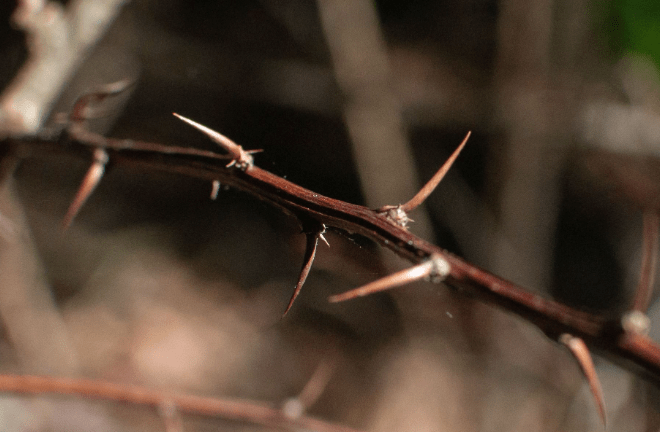
Blackberry
Plants are a popular choice for home gardeners due to their delicious fruit and easy maintenance. These plants are known for their sweet and juicy berries, making them a favorite for homemade jams, pies, and other tasty treats. They are also easy to grow and require minimal care, making them a great option for beginner gardeners. In addition to their tasty fruit, blackberry plants also provide beautiful and vibrant foliage, adding aesthetic appeal to any garden. They can be grown in various climates and are a great addition to any outdoor space. With proper care and maintenance, blackberry plants can provide an abundant harvest of delicious fruit for you and your family to enjoy. Whether you’re a seasoned gardener or just starting out, consider adding blackberry plants to your garden for a fruitful and beautiful addition to your outdoor space.
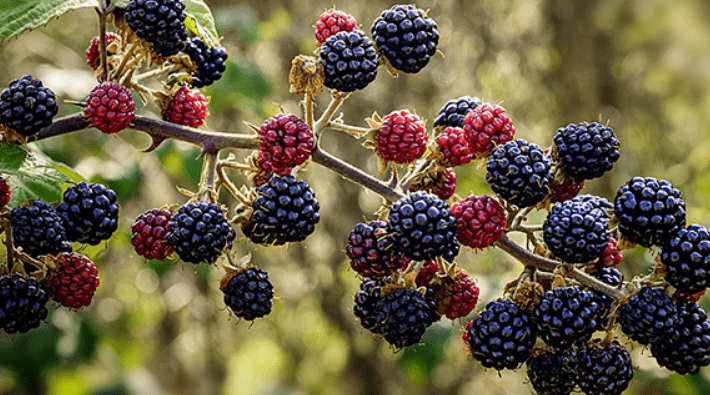
Thistle
Is a plant that is often considered a weed due to its prickly nature and invasive tendencies. It is a tough and resilient plant, able to thrive in a variety of conditions and climates. While it may not be popular among gardeners, thistle actually has some benefits. The plant is known to attract pollinators such as bees and butterflies, making it a valuable addition to a garden ecosystem. Thistle also has a long taproot that can help break up hard soil and improve soil quality. Additionally, thistle has been used for medicinal purposes in some cultures, with the seeds and roots believed to have anti-inflammatory and digestive properties. While it may be a challenge to manage and control, thistle can still have some value in the garden and natural environment.
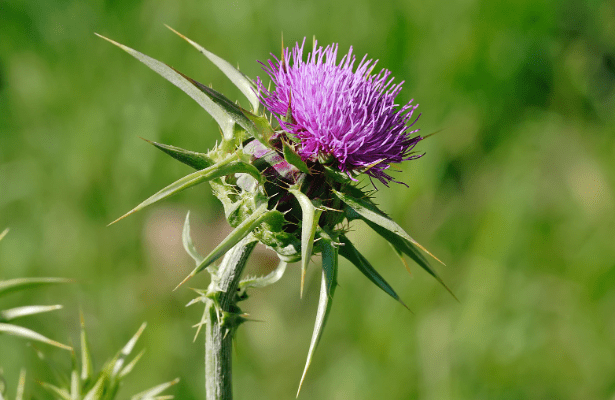
Firethorn (Pyracantha)
Is a popular plant in landscaping due to its attractive berries and ability to act as a natural barrier or hedge. It is a hardy shrub that can tolerate a variety of soil and weather conditions, making it a versatile option for gardens and outdoor spaces. The berries of the firethorn plant are not only visually appealing, but they also provide food for birds and other wildlife. The plant’s thorns also act as a deterrent for unwanted pests and intruders, making it a useful addition to a garden or landscape. While firethorn may require some maintenance to keep it in check, its benefits in terms of aesthetics and function make it a valuable plant for landscaping purposes.
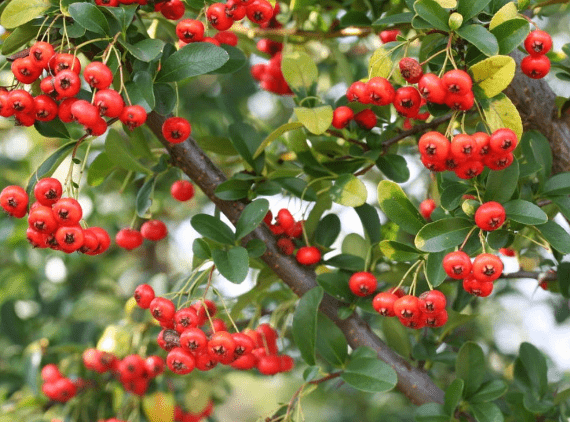
Osage Orange
Osage Orange also known as hedge apple or horse apple, is a unique plant that has been used for a variety of purposes. It is known for its large, green, bumpy fruit and its strong, durable wood. The fruit of the Osage Orange has been used in some cultures for its insect-repelling properties, and the wood has been used for making bows and other tools. While the Osage Orange tree can be a challenge to manage due to its large size and thorny branches, it can still be a valuable addition to the landscape. Its unique appearance and historical uses make it a fascinating and useful plant for those willing to take on the challenge of managing it. Overall, the Osage Orange is a plant with interesting and practical uses that can bring value to a variety of settings.
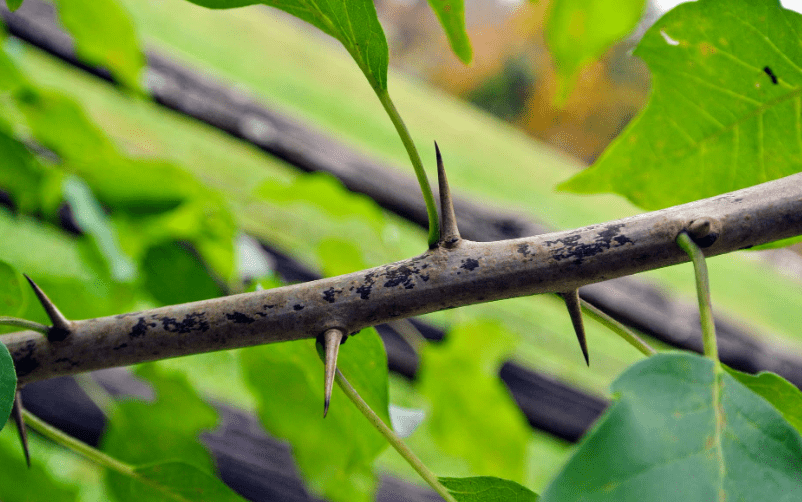
Hawthorn
Hawthorn is a versatile and beautiful plant that can be used for landscaping and gardening. It is known for its showy white or pink flowers and vibrant red berries, making it an attractive addition to any garden. Hawthorn is also valued for its medicinal properties, as it has been used for centuries to support heart health and circulation. While hawthorn may require some maintenance to keep it in check, its benefits in terms of aesthetics and function make it a valuable plant for landscaping purposes. Whether used as a hedge, ornamental tree, or natural habitat for wildlife, hawthorn is a versatile and valuable addition to any outdoor space.
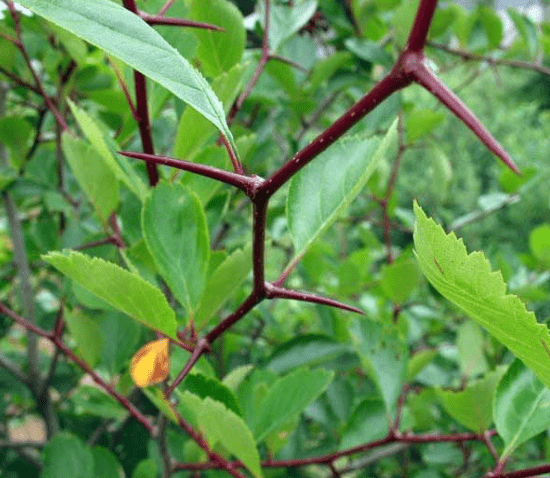
Cactus Flowers
Cactus Flowers are beautiful and unique, adding a vibrant pop of color to any desert landscape. They come in a variety of colors, shapes, and sizes, making them a visually stunning addition to any garden. Beyond their beauty, cactus flowers also play an important role in the ecosystem by providing nectar for pollinators such as bees and hummingbirds. Additionally, some species of cactus flowers have been used for medicinal purposes by indigenous cultures for centuries. They are also known for their resilience and ability to thrive in harsh desert conditions. While caring for cactus flowers may require some knowledge of their specific needs, the rewards of their stunning blooms and ecological benefits make them a worthwhile addition to any garden or landscape. Overall, the unique appearance, ecological importance, and historical uses of cactus flowers make them a fascinating and valuable plant for those interested in incorporating them into their outdoor spaces.
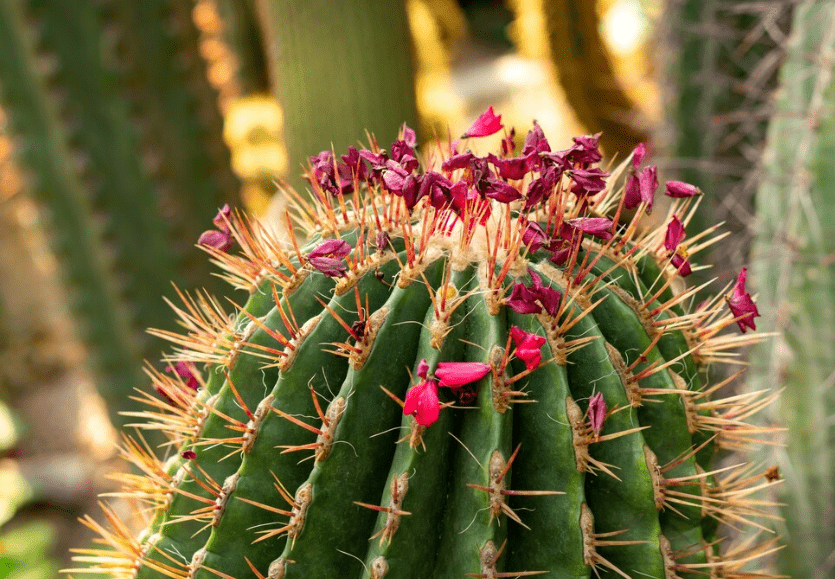
Growing and Caring for Flowers with Thorns
Soil and Planting Requirements
Cactus flowers are beautiful and unique, adding a vibrant pop of color to any desert landscape. They come in a variety of colors, shapes, and sizes, making them a visually stunning addition to any garden. Beyond their beauty, cactus flowers also play an important role in the ecosystem by providing nectar for pollinators such as bees and hummingbirds. Additionally, some species of cactus flowers have been used for medicinal purposes by indigenous cultures for centuries. They are also known for their resilience and ability to thrive in harsh desert conditions.
While caring for cactus flowers may require some knowledge of their specific needs, the rewards of their stunning blooms and ecological benefits make them a worthwhile addition to any garden or landscape. Overall, the unique appearance, ecological importance, and historical uses of cactus flowers make them a fascinating and valuable plant for those interested in incorporating them into their outdoor spaces.
When it comes to soil and planting requirements, cactus flowers thrive in well-draining soil, typically a mix of sand, gravel, and a small amount of organic matter. It’s important to avoid overwatering, as cactus flowers are adapted to survive in arid conditions and can be prone to root rot if they are watered too frequently. When planting cactus flowers, it’s important to consider their need for plenty of sunlight and minimal water. With the right soil and planting conditions, cactus flowers can thrive and bring beauty to any landscape.
Watering and Fertilization
Watering and Fertilization are important factors to consider when caring for cactus flowers. Overwatering can lead to root rot, so it’s important to water cactus flowers sparingly, especially during the winter months when they are dormant. Using a well-draining soil mix and allowing the soil to dry out between waterings can help prevent overwatering.
Fertilization is also important for cactus flowers, but it should be done sparingly. Using a fertilizer specifically designed for cacti and succulents can help provide the necessary nutrients without overwhelming the plants. It’s best to fertilize cactus flowers during their active growing season, typically in the spring and summer months.
Overall, proper watering and fertilization practices are essential for the health and well-being of cactus flowers. By understanding their specific needs and providing the right care, you can help these resilient plants thrive and bloom beautifully in your garden.
Pruning and Maintenance
Pruning and Maintenance are important tasks when it comes to keeping your plants healthy and thriving. Regular pruning can help promote new growth, maintain the shape of the plant, and remove any dead or diseased parts. When pruning your plants, it’s important to use sharp, clean tools to make clean cuts and avoid damaging the plant. Additionally, it’s important to remove any dead or yellowing leaves to prevent the spread of disease and maintain the overall appearance of the plant.
In terms of maintenance, it’s important to regularly check for pests and diseases that could potentially harm your plants. Keeping an eye out for any signs of infestation and taking prompt action to address the issue can help protect your plants from damage. It’s also important to regularly check the soil and make sure it’s well-draining to prevent waterlogging, which can lead to root rot.
Overall, taking the time to properly prune and maintain your plants can help them stay healthy and vibrant, allowing them to thrive and beautify your garden.
Pest and Disease Management
Pest and Disease Management is an important part of maintaining a healthy garden. Regular pruning can help promote new growth, maintain the shape of the plant, and remove any dead or diseased parts. When pruning your plants, it’s important to use sharp, clean tools to make clean cuts and avoid damaging the plant. Additionally, it’s important to remove any dead or yellowing leaves to prevent the spread of disease and maintain the overall appearance of the plant.
In terms of maintenance, it’s important to regularly check for pests and diseases that could potentially harm your plants. Keeping an eye out for any signs of infestation and taking prompt action to address the issue can help protect your plants from damage. It’s also important to regularly check the soil and make sure it’s well-draining to prevent waterlogging, which can lead to root rot.
Overall, taking the time to properly prune and maintain your plants can help them stay healthy and vibrant, allowing them to thrive and beautify your garden. By implementing these pest and disease management practices, you can ensure that your plants are well-protected and can continue to flourish.
Landscaping Ideas with Flowers with Thorns
Creating a Thorny Flower Border
Creating a thorny flower border can add a unique and beautiful element to your garden. When selecting plants for your border, consider choosing flowers with thorns or prickly foliage to create a natural barrier. Some popular options for thorny flowers include roses, barberry, and holly. These plants not only add visual interest to your garden, but they also act as a deterrent to keep unwanted animals and intruders out. When planting your thorny flower border, be sure to space the plants evenly and consider the mature size of each plant to ensure they have enough space to grow. Additionally, regular pruning and maintenance will help keep your thorny flower border looking tidy and well-kept. Overall, creating a thorny flower border can be a practical and aesthetically pleasing addition to your landscaping.
Thorny Flower Beds
Thorny Flower Beds can add a unique and beautiful element to your garden. When selecting plants for your flower beds, consider choosing flowers with thorns or prickly foliage to create a natural barrier. Some popular options for thorny flowers include roses, barberry, and holly. These plants not only add visual interest to your garden, but they also act as a deterrent to keep unwanted animals and intruders out. When planting your thorny flower beds, be sure to space the plants evenly and consider the mature size of each plant to ensure they have enough space to grow. Additionally, regular pruning and maintenance will help keep your thorny flower beds looking tidy and well-kept. Overall, creating thorny flower beds can be a practical and aesthetically pleasing addition to your landscaping.
Container Gardening with Thorny Flower
Thorny Flower Beds can add a unique and beautiful element to your garden. When selecting plants for your flower beds, consider choosing flowers with thorns or prickly foliage to create a natural barrier. Some popular options for thorny flowers include roses, barberry, and holly. These plants not only add visual interest to your garden, but they also act as a deterrent to keep unwanted animals and intruders out. When planting your thorny flower beds, be sure to space the plants evenly and consider the mature size of each plant to ensure they have enough space to grow. Additionally, regular pruning and maintenance will help keep your thorny flower beds looking tidy and well-kept. Overall, creating thorny flower beds can be a practical and aesthetically pleasing addition to your landscaping. When it comes to container gardening with thorny flowers, it’s important to choose the right size and type of container for the specific type of thorny flower you want to plant. Make sure the container has good drainage and is large enough to accommodate the plant as it grows. Also, be mindful of the placement of the container, as thorny flowers can act as a deterrent to keep unwanted pests out of your garden. With the right care and attention, container gardening with thorny flowers can add a beautiful and protective element to your outdoor space.
Safety Tips and Precautions
Handling Thorny Plants Safely
When working with thorny plants, it’s important to take safety precautions to avoid injury. Always wear gloves when handling thorny plants to protect your hands from scratches and puncture wounds. Use long-handled pruning shears to trim and prune thorny plants to keep a safe distance from the sharp thorns. When planting or maintaining thorny flower beds, be mindful of your surroundings and avoid sudden movements to prevent accidental contact with the thorns. Additionally, consider using protective eyewear to shield your eyes from potential injury. By taking these safety measures, you can enjoy working with thorny plants while minimizing the risk of harm.
Child and Pet Safety
Child and Pet Safety is of utmost importance when it comes to gardening with thorny plants. It’s important to create a barrier or designated area to prevent children and pets from coming into contact with thorny flowers. You can use fencing or other barriers to keep them away from the plants. Teach children to stay away from thorny plants and educate them on the potential dangers. It’s also a good idea to train your pets to stay away from these areas. Always supervise children and pets when they are in the garden to ensure their safety. By taking these precautions, you can create a beautiful and safe outdoor space for everyone to enjoy.
In conclusion, adding flowers with thorns to your garden can not only add visual interest but also provide a layer of protection for your other plants. Some popular options include roses, bougainvillea, and holly. When caring for these thorny flowers, it’s important to wear protective gloves and prune them regularly to maintain their beauty and health. With the right care, these flowers can be a unique and striking addition to any garden.
Frequently asked questions And Answer
Some beautiful flowers with thorns that you can consider planting in your garden are roses, bougainvillea, holly, and hibiscus. These flowers not only add beauty to your garden but also provide protection with their thorns.
Thorns can make pruning and maintenance a bit more challenging, but with proper care and handling, thorny flowers can be just as easy to maintain as any other type of flower.
It’s important to be cautious with thorny flowers around pets and children, as the thorns can cause injury if not handled carefully. It’s best to place thorny flowers in areas where they won’t pose a risk to pets or children.
Thorns can provide some protection against pests and insects, but it’s still important to monitor and maintain your garden to prevent any infestations.
When planting thorny flowers, make sure to provide them with the right amount of sunlight, water, and nutrients. Additionally, be mindful of their thorns when handling and pruning the plants.
